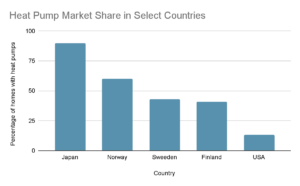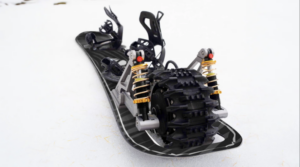The World Makes Too Much Methane From Our Biowaste, Yet Wants To Make More Intentionally
So, burning fossil fuels is the biggest climate problem. But all of the methane from our waste streams is also a big problem. Natural gas is mostly methane, aka CH4, a carbon atom and four hydrogen atoms. And it’s a problem because it’s a much stronger greenhouse gas than carbon dioxide, although it falls apart in our atmosphere faster. Infrared from the ground is absorbed and emitted by a methane molecule much more strongly than a carbon dioxide molecule, 26 times as bad over 100 years and 83 times as bad over 20 years.
Global methane budget from the Global Carbon Project
” data-image-caption=”
Global methane budget from the Global Carbon Project
” data-medium-file=”https://platoaistream.com/wp-content/uploads/2023/06/cow-burps-landfill-belches-rotting-stalks-livestock-dung-more-are-having-a-big-climate-impact-cleantechnica-2.png” data-large-file=”https://platoaistream.com/wp-content/uploads/2023/06/cow-burps-landfill-belches-rotting-stalks-livestock-dung-more-are-having-a-big-climate-impact-cleantechnica-3.png” decoding=”async” loading=”lazy” class=”wp-image-297344 size-full” src=”https://platoaistream.com/wp-content/uploads/2023/06/cow-burps-landfill-belches-rotting-stalks-livestock-dung-more-are-having-a-big-climate-impact-cleantechnica-1.png” alt=”Global methane budget from the Global Carbon Project” width=”1529″ height=”918″ srcset=”https://platoaistream.com/wp-content/uploads/2023/06/cow-burps-landfill-belches-rotting-stalks-livestock-dung-more-are-having-a-big-climate-impact-cleantechnica-1.png 1529w, https://platoaistream.com/wp-content/uploads/2023/06/cow-burps-landfill-belches-rotting-stalks-livestock-dung-more-are-having-a-big-climate-impact-cleantechnica-2.png 400w, https://platoaistream.com/wp-content/uploads/2023/06/cow-burps-landfill-belches-rotting-stalks-livestock-dung-more-are-having-a-big-climate-impact-cleantechnica-3.png 800w, https://cleantechnica.com/files/2023/06/MethaneInfographic2020-768×461.png 768w” sizes=”(max-width: 1529px) 100vw, 1529px”>
Global methane budget from the Global Carbon Project
I spent a bunch of time reviewing life cycle assessments (LCA) of upstream methane emissions from natural gas extraction, processing and transmission a couple of years ago, as it was a key point in discussions of blue hydrogen. There were dueling US and European LCAs, where the European one was vastly more sanguine about the problem than the American one. The American one by Jacobson and Howarth one was higher because they drew the system boundary wider and because they were looking at the quite remarkably bad US upstream emissions. The European one really liked leaning on best of breed Norwegian management of emissions and drew the system boundary more narrowly. Lots of hydrogen types loved the European LCA. I wasn’t as impressed.
Due mostly to the leading position of methanol — misnamed wood alcohol as it’s made from natural gas — as a maritime fuel replacement these days, I’ve been looking at the problem of human causes of biologically sourced methane. One of the pathways to low-carbon methanol is through biologically sourced methane, which is much better than fossil methane but still a concern. As I said to the Stena technical executives during the maritime decarbonization debate recently, if biomethanol ended up being the shipping fuel of the future, I’d shrug and move on. I don’t think it will for other reasons, but there are worse choices, like ammonia for example.
It took a while, but someone finally pointed me at the Global Carbon Project’s data on the subject.
What’s with the units? A teragram? What’s that? Well, it’s a million tons. Let’s call it 240 million tons of methane a year from the biological side of human causes. Note that it’s well over double the amount from upstream emissions from the fossil fuel industry, at least according to this source, and that recent data makes it clear their emissions are higher than previously though. This doesn’t make the fossil fuel industry remotely green, but it does contextualize their emissions a bit.
Remember, we have to multiple that by 26 to 83. That makes it 6 billion to 20 billion tons of CO2e per year. Remember that the CO2 that’s causing global warming is about 40 billion tons a year. Yeah, our methane emissions from all the waste material we leave lying around the place is 15% to 50% as big a problem as the carbon dioxide from burning fossil fuels, at least by this source and math. It’s not like the IPCC folks are remotely uninformed or stupid, so they have this figured out.
Let’s talk a bit about where methane comes from in biological processes. It’s the flip side of carbon dioxide. When plant matter decomposes in the presence of oxygen, then little microbes that need oxygen do the work, and turn the carbon in the plant matter into CO2. That’s okay, as the carbon came from the atmosphere anyway, when plants breathed in the CO2 to make their cells.
But when there isn’t any oxygen around, other microbes come out to play. These ones decompose the plant matter and turn it into methane instead. And that’s a problem. Turning plants into CO2 is fine because the global warming potential is a wash, but turning them into methane sucks because of the 26-83 times as bad global warming problem.
As noted, our methane emissions from our biological wastes are well over double those from fossil fuels. Where do those methane emissions come from? Well, multiple sources, not in order.
First off, our cattle. Their four stomachs turn grass into beef and milk, but they also turn it into methane. Cow burps are a climate problem.
Second, livestock dung, about 1.4 billion tons in Europe alone every year. Yeah, big piles of it all over the place, often collected into ponds. The stuff on the outside gets the oxygen and carbon dioxide comes off. The stuff on the inside of the ponds and piles doesn’t get the oxygen so methane results. Good and bad news about free range cattle, by the way.
Third, stalks from grains and other crops. We don’t eat them, so we pile them up beside fields. Once again, the stuff on the outside gets the oxygen and carbon dioxide results, but the stuff buried in the middle of the piles has no oxygen available, so methane.
Fourth, rice paddies. Yeah, all that water around the roots seems to create perfect conditions for stuff in the mud to be eaten by bugs who aren’t oxygen fans, and so, methane.
Fifth, food waste, about 2.5 billion tons a year or a third of all the food we manufacture. Yes, there is no problem with hunger, there’s a problem with us throwing away food. And it goes into piles where the stuff on the outside gets the oxygen, and the large part on the inside doesn’t, so methane.
Sixth, landfills. All the biological waste we stuff into dumps is mostly covered up by more of our waste, so as it decomposes, once again with no oxygen around so methane results. This overlaps with food waste, obviously.
Seventh, ineffective burning of waste plant matter. In lots of places, the thing to do with lots of waste stalks, dung and wood scraps is to burn it. In theory this turns it into carbon dioxide, but in reality, like flaring natural gas emissions from oil wells, it’s just not that effective. More methane.
Eighth, wood waste piles at lumber mills. Big piles of sawdust see the wood in the middle of the piles emitting methane as they sit there.
Finally, dams. Wait, what? Yeah, not a huge contribution, but still. When we build a new dam and flood the reservoir, a bunch of biomass gets removed from contact with oxygen. And, as a result, those methane emitting bugs get to do the job. That’s why BC’s Site C dam, for example, won’t be producing carbon neutral electricity for decades after it’s commissioned.
Now, anyone looking at this would say, wow, this is a problem, we really need to cut back on letting plant matter rot without any oxygen around. But no. Lots of people seem to think it’s a great idea to create more methane from plant matter with something call anaerobic digesters. Anaerobic just means “in the absence of oxygen”, so you know what that means. Yeah, no oxygen so let’s create methane with the bugs instead.
There’s a big market for anaerobic digesters because there’s lot of crop stalks, animal dung and the like lying around, waiting to be turned into something useful. Not quite the right attitude, but close.
What to do, what to do. Luckily, there are a bunch of answers.
For cow burps, seaweed. There’s a chemical compound in seaweed that acts like Beano for cows, reducing methane burps by up to 80%. Free range cows are hard to get to, but all of the feedlot cattle? Give them seaweed Beano, already. And for milk cattle, they existing in barns with ventilation systems. That means we can do something with their methane by putting tech into the ventilation system. The leading solution seems to be methanophiles, bugs that like to eat methane as opposed to making it.
For livestock dung, there are two pathways. The first is simply to mechanically spread it around and turn it over. Get it good and exposed to oxygen. Don’t leave a lot of piles of it where there isn’t any oxygen on the inside. For pig manure ponds, run bubbler hoses through the bottom of them and pump air through them to aerate the manure. Then the animal dung gets turned into carbon dioxide, which is fine. (Oh, and free range cattle can’t be fed seaweed Beano but they also leave cow patties that are spread out and exposed to oxygen, so less of a methane problem.)
Second, collect livestock dung and turn it into biofuels. The EU is funding a study which has very low technical risks to turn livestock dung into jet fuel. Avoid the methane of rotting animal dung, make biofuels for planes, and when the planes burn them, they turn into carbon dioxide. Doubly virtuous.
Next, stalks from our crops. Once again, two pathways. Toss them and turn them so that they rot in the presence of oxygen and turn back into the carbon dioxide they pulled from the atmosphere in a carbon neutral way. Next, shove them into fermenters and distillers and turn them into biofuels for the hard parts of aviation and marine shipping.
Rice paddies? I don’t have a good solution for that one. Sorry.
Food waste? Eliminate it as much as possible. We can be a lot more efficient than a full third of food globally being wasted. Divert what remains away from landfills where at all possible. Once again, shove it into fermenters and distillers to make biofuels for the actually hard to deal with segments of maritime shipping.
Landfills? Divert as much biological waste from them as possible. Reducing and diverting food waste would be a big help. Our continued efforts to go paperless will help. And shoving pipes into them to give the methane a pathway for escape is good, as long as we take the methane that comes out and capture it for use or burn it very efficiently. After all, we still have to make methanol from something, and biomethane we can’t avoid making makes a lot more sense than making methane intentionally.
Burning plant stalks badly? Well, reducing the amounts as per earlier approaches makes a lot of sense. Then shoving the rest of it into pyrolysis devices of various types makes sense. We can make biocrude as another pathway to biofuels for hard targets, and biochar or even carbon black, which we can bury or make into tires. Much better than methane.
Dams? Well, when we build the things, build them only in places without a lot of plants and rich soil. Far north. Deserts. And strip whatever plants and trees exist in the reservoir area the heck out as stringently as possible before we fill the dam.
We have solutions, hard as they are to implement globally. Some of them are easier because we have concentrated places they exist, like dairy barns, landfills and cities’ food distribution systems. We can reduce this big climate change problem. And we really shouldn’t be contributing to it by intentionally making more methane with anaerobic digesters.
Sign up for daily news updates from CleanTechnica on email. Or follow us on Google News!
Have a tip for CleanTechnica, want to advertise, or want to suggest a guest for our CleanTech Talk podcast? Contact us here.
Former Tesla Battery Expert Leading Lyten Into New Lithium-Sulfur Battery Era — Podcast:
I don’t like paywalls. You don’t like paywalls. Who likes paywalls? Here at CleanTechnica, we implemented a limited paywall for a while, but it always felt wrong — and it was always tough to decide what we should put behind there. In theory, your most exclusive and best content goes behind a paywall. But then fewer people read it! We just don’t like paywalls, and so we’ve decided to ditch ours. Unfortunately, the media business is still a tough, cut-throat business with tiny margins. It’s a never-ending Olympic challenge to stay above water or even perhaps — gasp — grow. So …
Advertisement
- SEO Powered Content & PR Distribution. Get Amplified Today.
- PlatoAiStream. Web3 Data Intelligence. Knowledge Amplified. Access Here.
- Minting the Future w Adryenn Ashley. Access Here.
- Buy and Sell Shares in PRE-IPO Companies with PREIPO®. Access Here.
- Source: https://cleantechnica.com/2023/06/04/cow-burps-landfill-belches-rotting-stalks-livestock-dung-more-are-having-a-big-climate-impact/
- :has
- :is
- :not
- :where
- $UP
- 1
- 100
- 15%
- 20
- 20 years
- 26
- 40
- 9
- a
- About
- above
- According
- acts
- actually
- Advertise
- After
- again
- ago
- AIR
- Alcohol
- All
- alone
- already
- also
- Although
- always
- American
- Ammonia
- amount
- amounts
- and
- animal
- Another
- answers
- any
- anyone
- apart
- approaches
- ARE
- AREA
- around
- AS
- assessments
- At
- Atmosphere
- atom
- attitude
- available
- aviation
- avoid
- away
- back
- Bad
- badly
- battery
- BE
- because
- Beef
- been
- before
- behind
- being
- BEST
- Better
- Big
- Biggest
- Billion
- biochar
- biomass
- Bit
- Black
- Blue
- Bottom
- BREED
- budget
- bugs
- build
- Bunch
- burn
- burning
- business
- but
- by
- call
- came
- CAN
- capture
- carbon
- carbon dioxide
- causes
- causing
- Cells
- challenge
- change
- chemical
- chip
- choices
- cleantech
- Cleantech Talk
- clear
- Climate
- Climate change
- Close
- co2
- collect
- come
- comes
- Compound
- Concentrated
- Concern
- conditions
- contact
- content
- contextualize
- continued
- contributing
- contribution
- Couple
- covered
- create
- crop
- crops
- Cut
- cycle
- dairy
- data
- Days
- deal
- debate
- decades
- decarbonization
- decide
- decided
- Devices
- discussions
- distribution
- do
- does
- Doesn’t
- don
- Dont
- double
- doubly
- during
- Earlier
- easier
- eat
- Effective
- efficient
- efficiently
- efforts
- electricity
- eliminate
- Emissions
- Era
- escape
- Ether (ETH)
- EU
- Europe
- European
- Even
- Every
- example
- Exclusive
- executives
- exist
- existing
- expert
- exposed
- extraction
- Falls
- fans
- far
- faster
- Fed
- fewer
- Fields
- figured
- fill
- Finally
- fine
- First
- Flip
- flood
- food
- For
- fossil
- Fossil fuel
- fossil fuels
- four
- Free
- from
- Fuel
- fuels
- full
- funding
- future
- GAS
- get
- Give
- Global
- global warming
- Globally
- Go
- Goes
- good
- grass
- great
- Green
- greenhouse gas
- Ground
- Grow
- Guest
- Hard
- Have
- having
- help
- here
- higher
- http
- HTTPS
- huge
- human
- hunger
- hydrogen
- i
- idea
- if
- Impact
- implement
- implemented
- impressed
- in
- industry
- instead
- intentionally
- into
- IT
- Job
- jpg
- just
- Key
- Know
- large
- leading
- least
- Leave
- less
- letting
- Life
- like
- Limited
- little
- Long
- looking
- Lot
- loved
- Low
- low-carbon
- made
- make
- MAKES
- Making
- management
- margins
- Marine
- Maritime
- Market
- material
- math
- Matter
- max-width
- means
- Media
- methane
- methane emissions
- Methanol
- Middle
- Milk
- million
- molecule
- monthly
- more
- more efficient
- most
- mostly
- move
- much
- multiple
- Natural
- Natural Gas
- Need
- Neutral
- New
- news
- next
- no
- North
- Norwegian
- noted
- of
- off
- often
- oh
- Oil
- Okay
- Olympic
- on
- once
- ONE
- ones
- only
- opposed
- or
- order
- Other
- our
- out
- outside
- over
- Oxygen
- part
- parts
- Patreon
- PayPal
- People
- perfect
- perhaps
- pipes
- Place
- Places
- Planes
- plants
- plato
- Plato Data Intelligence
- PlatoData
- Play
- please
- podcast
- Point
- position
- possible
- potential
- presence
- previously
- Problem
- processes
- processing
- project
- projects
- pump
- put
- Putting
- range
- Read
- Reality
- really
- reasons
- recent
- recently
- reduce
- reducing
- remains
- remember
- Removed
- replacement
- REST
- result
- Results
- reviewing
- Rice
- Rich
- right
- risks
- roots
- Run
- s
- Said
- say
- scraps
- see
- seem
- seems
- segments
- sense
- Shipping
- should
- shrug
- side
- simply
- sit
- site
- So
- soil
- solution
- Solutions
- some
- Someone
- something
- Source
- sourced
- Sources
- spent
- spread
- stay
- Still
- streams
- Strip
- stronger
- strongly
- Study
- subject
- suggest
- support
- system
- Systems
- Take
- Talk
- targets
- team
- tech
- Technical
- Tesla
- than
- that
- The
- The Future
- their
- Them
- then
- theory
- There.
- These
- they
- thing
- things
- think
- Third
- this
- those
- though?
- Through
- Throwing
- time
- times
- tip
- tires
- to
- tons
- too
- took
- toss
- tough
- Trees
- TURN
- Turned
- Turning
- turns
- two
- types
- units
- Updates
- us
- use
- various
- Ve
- very
- via
- wait
- Waiting
- want
- wants
- was
- Waste
- Water
- Way..
- we
- WELL
- Wells
- were
- What
- whatever
- when
- which
- while
- WHO
- why
- wider
- will
- with
- without
- wood
- Work
- world
- worse
- would
- WoW
- Wrong
- year
- years
- yes
- yet
- you
- Your
- zephyrnet









